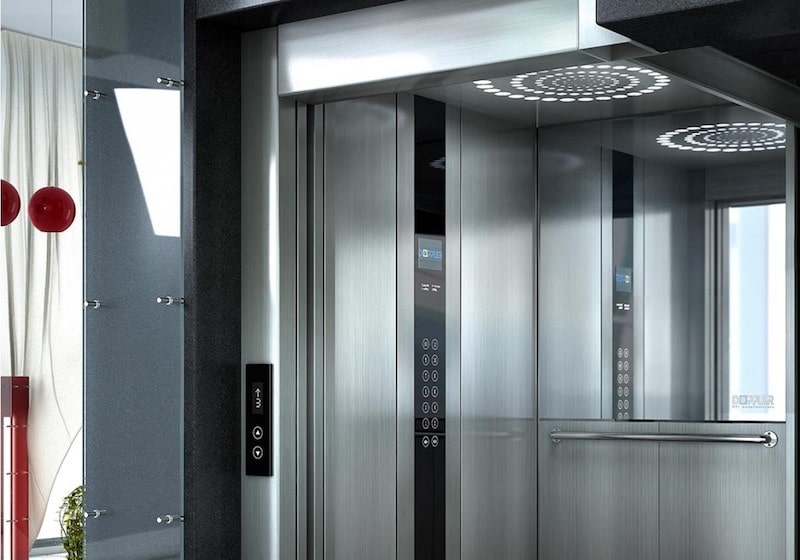Exploring the World of Lifts: Common Concerns Dealt With by Various Lift Devices
As we navigate via the upright transport systems of modern-day buildings, lifts attract attention as a crucial part of our lives. However, behind their seamless procedure lies a globe of elaborate devices that can often experience obstacles. From hydraulic elevators to traction systems and machine-room-less layouts, each lift type features its collection of typical concerns. Understanding these obstacles is essential for making certain the smooth functioning of these essential systems. Allow's check out the complexities that underlie the procedure of lifts and the potential problems that can occur, clarifying the complex web of lift systems.
Hydraulic Elevators
Hydraulic lifts, usually chosen for low-rise structures, make use of fluid stress to control the motion of the lift car (lift repair companies). This mechanism includes a hydraulic pump pushing oil into a cylinder, triggering the lift to relocate the wanted instructions. While hydraulic lifts are recognized for their quiet and smooth operation, they do come with their own set of common problems
One prevalent problem with hydraulic lifts is oil leak. In addition, problems with the control system, such as malfunctioning valves or a malfunctioning pump, can cause disturbances in the lift's activity.
Normal upkeep and timely repair services are necessary to make certain the smooth performance of hydraulic elevators. By dealing with these usual problems proactively, building proprietors can decrease downtime and make sure the security and effectiveness of their vertical transport system.
Traction Lifts
When taking into consideration upright transportation systems in buildings, another usual kind aside from hydraulic elevators is the grip elevator. Traction elevators run utilizing a system of ropes and counterweights that relocate the elevator car by clutching onto the hoist ropes. This system enables for smoother and faster vertical transport compared to hydraulic systems.
Among the typical concerns faced by grip lifts is rope wear. The continuous movement of the ropes within the grip system can lead to damage gradually, possibly creating the elevator to breakdown or become risky for use. Normal assessments and maintenance of the ropes are vital to make certain the elevator's correct functioning and security.
An additional issue that grip lifts may come across is associated with the control system. Troubles with the control system can cause concerns such as unpredictable motion, delays in action times, and even total closures. Normal screening and upkeep of the control system are vital to prevent such concerns and ensure the elevator's dependability.
Machine-Room-Less (MRL) Lifts
Among the vital elements of MRL elevators is the portable gearless grip device that is mounted within the hoistway. This maker effectively drives the lift car without the demand for cumbersome devices found in typical traction lifts. Furthermore, MRL elevators commonly utilize a weight system to stabilize the automobile, further improving their energy performance.
In spite of their benefits, MRL lifts may deal with challenges connected to upkeep and repair work because of the constrained space for equipment setup. Accessibility for servicing elements within the shaft can be limited, calling for specialized training for service technicians. Correct upkeep schedules and regular assessments are essential to ensure the continued smooth operation of MRL elevators.
Overloading and Weight Limitation Issues
Are lifts outfitted to take care of excess weight loads efficiently and securely? Overwhelming and weight restriction concerns are essential concerns in elevator operations. Lift manufacturers design lifts with particular weight capabilities to guarantee traveler security and devices longevity. Going beyond these weight limitations can lead to various problems, including mechanical failings, hold-ups, and safety and security threats.
When elevators are overloaded, it puts too much strain on the electric motor, cords, and various other components, potentially causing breakdowns or failures. Safety and security systems such as sensors and overload visit the site sensing units remain in place to prevent lifts from moving if they spot excess weight. Furthermore, exceeding weight restrictions can result in increased power consumption and damage on the elevator system.
To minimize overwhelming concerns, developing supervisors must prominently present weight limitations in lifts and educate owners on the significance of sticking to these restrictions navigate to this website - lift repair companies. Routine upkeep checks by qualified specialists can additionally help make sure that elevators are running within safe weight parameters. By resolving overloading and weight limit problems proactively, structure owners can enhance elevator safety and security and effectiveness
Electric System Failings
Going beyond weight restrictions in lifts can not just lead to mechanical concerns yet additionally possibly add to electrical system failings within the lift framework. Electric system failings are a critical issue in elevator operation, as they can cause unexpected closures, breakdowns, or even security risks.
Additionally, power surges or fluctuations in the electrical supply can also disrupt the lift's procedure, impacting its performance and safety. These electric disruptions can damage delicate lift components such as control panels, circuit card, or sensing units, resulting in system failures. Regular maintenance and inspections are vital to determine and address possible electric issues without delay, making certain the reliable and risk-free procedure of elevator systems. By sticking to weight limitations and performing regular electrical system checks, structure owners can alleviate the risk of electric failures in lifts.
Verdict

Hydraulic elevators, commonly chosen for low-rise structures, utilize fluid pressure to manage the movement of the lift the original source cars and truck.When thinking about vertical transportation systems in structures, an additional usual kind apart from hydraulic elevators is the grip lift. Grip elevators operate using a system of ropes and counterweights that move the elevator car by grasping onto the hoist ropes. Unlike typical elevators that require a separate machine space to house the tools, MRL elevators integrate many of the components within the shaft, getting rid of the demand for a specialized machine space.In verdict, lifts face typical concerns such as hydraulic malfunctions, traction system failings, and electrical system issues.
Comments on “Discover the Best Disabled Platform Lifts Prices UK for Residential and Commercial Use”